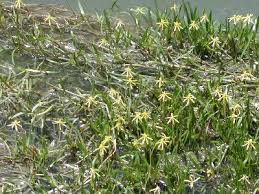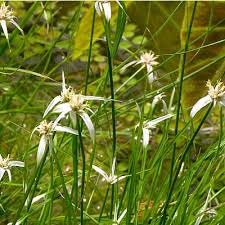Stargrass, scientifically known as Hypoxis hemerocallidea, is a fascinating grass with a rich history of traditional use. This small, perennial herb (grass) is native to Southern Africa and is well-regarded for its potential health benefits. Stargrass gets its name from the star-like appearance of its bright yellow flowers that bloom atop long, slender stems. Despite its unassuming size, this plant holds a special place in traditional medicine and has gained attention for its various uses.
In traditional African healing practices, Stargrass has been used for centuries to address a wide array of health concerns. The tuberous roots of the plant are the most commonly used part and are believed to contain beneficial compounds. These roots have been used to create infusions, tinctures, and decoctions that are thought to possess medicinal properties. Stargrass has been traditionally used to support the immune system, promote healthy digestion, and alleviate symptoms of common ailments.
The potential health benefits of Stargrass are attributed to its rich composition of bioactive compounds. Some studies have suggested that Stargrass contains antioxidants, which are compounds that help protect the body’s cells from damage caused by harmful molecules called free radicals. Additionally, Stargrass is believed to have anti-inflammatory properties, which could contribute to its traditional use in addressing various inflammatory conditions.
One of the key components found in Stargrass is a group of sterols, which are natural plant compounds that resemble cholesterol in structure. These sterols are thought to have a positive impact on cholesterol levels and may contribute to cardiovascular health. Moreover, Stargrass is also said to possess antidiabetic properties, with some research indicating its potential to help regulate blood sugar levels.
While Stargrass has a history of traditional use and shows promise in various areas, it’s important to note that scientific research on its effects is still ongoing. Before considering Stargrass for any health-related purposes, it’s advisable to consult with a qualified healthcare professional. As with any herbal remedy, individual responses can vary, and potential interactions with medications should be taken into account.
In addition, Stargrass (Hypoxis hemerocallidea) is a captivating plant with a storied history in traditional African medicine. Its striking star-shaped flowers and potential health benefits have captured the curiosity of researchers and health enthusiasts alike. While more scientific exploration is needed to fully understand its effects, the cultural significance and potential medicinal value of Stargrass continue to make it an intriguing subject of study.
Read Also: Strawberry Leaves: Economic Importance, Uses and By-Products
Growing and Care Guide of Stargrass

Growing and caring for Stargrass (Hypoxis hemerocallidea) can be a rewarding experience. Whether you’re a seasoned gardener or a beginner, following these simple steps can help you cultivate healthy and vibrant Stargrass plants:
1. Location and Soil: Choose a sunny to partially shaded spot in your garden or a container. Stargrass thrives in well-draining soil with good organic content. A sandy loam or a mix of compost and sand works well.
2. Planting: Plant Stargrass tubers in spring or early summer, when the soil is warm. Bury the tubers about 2 to 3 inches deep and space them around 6 to 8 inches apart. Water the soil after planting to settle it around the tubers.
3. Watering: Stargrass prefers consistently moist soil, but it should not be waterlogged. Water the plants when the top inch of soil feels dry. During hot and dry periods, you might need to water more frequently.
4. Fertilizing: Feed Stargrass with a balanced, slow-release fertilizer during the growing season (spring and summer). Follow the package instructions for application rates. Avoid over-fertilizing, as it can lead to excessive foliage growth at the expense of flowers.
5. Mulching: Applying a layer of organic mulch around the plants can help retain moisture, suppress weeds, and regulate soil temperature. Just make sure the mulch doesn’t touch the plant stems.
6. Pruning: Deadhead spent flowers to encourage continuous blooming. Once the flowering season is over, you can trim back any leggy or yellowing foliage to maintain the plant’s appearance.
7. Winter Care: In regions with frost, Stargrass may die back to the ground in winter. Mulch the area with a thick layer of straw or leaves to protect the tubers from freezing temperatures. If growing in a container, you can move it indoors to a cool and well-lit location.
8. Pest and Disease Control: Stargrass is generally resistant to most pests and diseases. However, keep an eye out for aphids, snails, or slugs. If you notice any issues, address them promptly with appropriate organic remedies.
9. Propagation: Stargrass can be propagated by dividing the tubers in early spring before new growth begins. Carefully separate the tubers and replant them at the desired spacing.
10. Harvesting: If you’re growing Stargrass for its traditional uses, wait until the plants have matured for a few years before harvesting the tubers. Carefully dig up the tubers in fall, wash them thoroughly, and dry them for later use.
Remember, while Stargrass is known for its traditional medicinal uses, always consult with a healthcare professional before using it for any health-related purposes. By providing the right growing conditions and proper care, you can enjoy the beauty and potential benefits of Stargrass in your garden.
Read Also: Strawberry Petioles: Economic Importance, Uses and By-Products
Benefits and Uses of Stargrass

Stargrass (Hypoxis hemerocallidea) is known for its potential health benefits and various traditional uses. While scientific research is ongoing, here are some of the reported benefits and uses of Stargrass:
1. Traditional Medicinal Uses: Stargrass has a long history of use in traditional African medicine. It’s believed to have immune-boosting properties and has been used to support the body’s natural defense mechanisms. It’s also used to address various ailments such as digestive issues, respiratory problems, and inflammation.
2. Antioxidant Properties: Stargrass is thought to contain antioxidants, which are compounds that help neutralize harmful free radicals in the body. Antioxidants play a role in reducing oxidative stress and supporting overall health.
3. Anti-Inflammatory Effects: Some research suggests that Stargrass may have anti-inflammatory properties. This could make it useful for managing conditions characterized by inflammation, though more studies are needed to fully understand its potential in this area.
4. Potential Cardiovascular Support: Stargrass contains sterols, which are compounds that resemble cholesterol in structure. These sterols might have a positive impact on cholesterol levels and cardiovascular health. However, further research is required to establish this connection conclusively.
5. Blood Sugar Regulation: Stargrass has been explored for its potential to help regulate blood sugar levels. Some studies suggest that it may assist in managing diabetes, but this area requires more investigation.
6. Traditional Aphrodisiac: In some traditional systems, Stargrass has been used as an aphrodisiac and to support reproductive health. However, scientific evidence in this regard is limited, and caution is advised.
7. Culinary Uses: In some cultures, Stargrass tubers are consumed as a food source. They can be prepared by boiling, roasting, or grinding into a flour. However, these culinary uses are less common compared to its traditional medicinal applications.
8. Skin and Hair Care: Stargrass extracts are sometimes incorporated into skincare and haircare products. It’s believed to have soothing and nourishing properties that could benefit the skin and hair.
It’s important to note that while Stargrass shows promise in various areas, more rigorous scientific research is needed to validate many of these claims. If you’re considering using Stargrass for its potential health benefits, it’s recommended to consult with a healthcare professional before doing so, especially if you’re on medication or have underlying health conditions.
In conclusion, Stargrass’s potential benefits and uses have intrigued traditional healers and researchers alike. While it has a rich history of traditional use, its role in modern healthcare requires further exploration to fully understand its mechanisms and effects. Always approach Stargrass with cautious optimism and seek guidance from medical professionals before incorporating it into your wellness routine.
Read Also: 5 Reasons to Prioritize Health and Fitness in Schools
